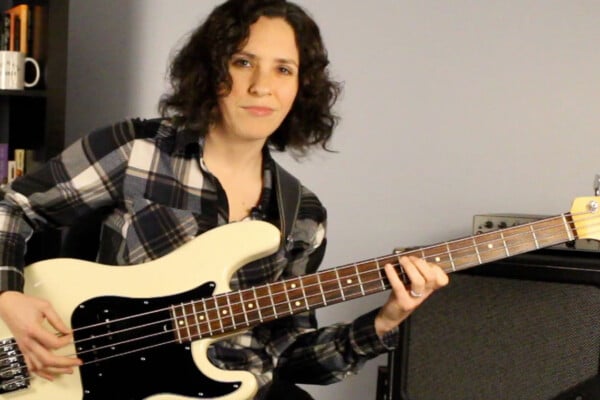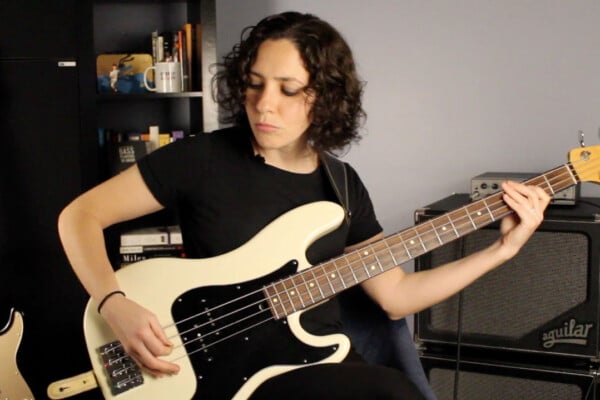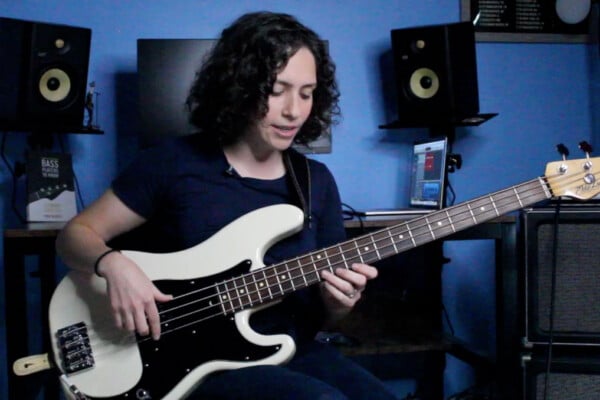How To Start A Fire
 As bass players, we brethren of the low end are aware of something that normal listeners, and even other musicians, take for granted. We know that a song starts and stops with us. We know that a great drummer can make or break a band in general, but once that slot is filled with a solid player he can’t really do much damage to the hard work of a well-rehearsed song in a tight band.
As bass players, we brethren of the low end are aware of something that normal listeners, and even other musicians, take for granted. We know that a song starts and stops with us. We know that a great drummer can make or break a band in general, but once that slot is filled with a solid player he can’t really do much damage to the hard work of a well-rehearsed song in a tight band.
Guitarists and keyboard players are nice touches – they can elevate the music with their unique style. However we, I’m sorry, WE, on the bass, hold the keys to the fort. It is through our efforts that a song can take new shape, new form, but more importantly it is because of us that other peoples’ soloing takes flight.
In this, the first chapter of what will be known as “TheStarM Method,” I would like to address a few things you can do as a bassist to propel a solo or song. Now, this information will deal primarily with what to do behind an improvising soloist, but much of this can apply to any situation at any moment in a piece of music. Hopefully this will provide you with some new ammunition to get a crowd moving, your fellow band mates instantly inspired, and inject some excitement into old familiar places.
1. Pedal Tones:
As you know, a pedal tone is when you sustain the same note over a series of chord progressions. This note can be played in any rhythm as long as it, for the most part, doesn’t change.
The pedal tone is the bread and butter way to build tension in a song. Because the listener has grown accustomed to hearing the chord changes, when we anchor the song down from the bottom, people feel like something is coming. In my experience, behind a soloist, I like to hold a pedal tone coming out of the bridge of a song, through the next A section, and then see how well the soloist is reacting to what I’m doing. If he’s taking flight then I may continue it through a second A section and then let it loose.
Think of it like drawing back really hard on a bow and arrow. The longer you hold it the further the propulsion. Don’t sit on it too long, or else the pedal tone will begin feeling like “home” to the listener and that will, no doubt, be boring.
Before you let loose of the pedal tone be sure that you’re not in the middle of a turn around, or some random section in the form. It’s best to build to the downbeat of a section.
The cherry on top in this instance will come if you put a break on one, the bar before you return to original chord progression. This second of sonic suspense and absence of the low end makes for more impact when you come back in.
2. Catch That Rhythm:
An important aspect of playing behind a soloist and helping push him along is to listen carefully for easily integrated rhythms he may be playing in his solo. E.g. if you’re going along and the soloist is using triplets to build tension, it would behoove you to catch those triplets for a bar or two. The breaking up of general pacing of the song by the bass player attaching to a syncopated rhythm usually cues the drummer to do the same. These moments don’t have to be over exaggerated, and shouldn’t last long, remember, you’re helping your soloist not dictating.
With some practice in this you’ll realize that you have a couple of options when catching rhythms. You can either play the syncopation while adhering to the chord structure or you can abandon the chord structure and move the syncopation up or down the neck to create propulsion.
It is important to realize that, as a bassist, the chord is what WE say it is. So if for two bars you want to create some moving tension feel free, it won’t sound weird, just make sure you know where you’re gonna’ land. If you miss your re-entry point you will ABSOLUTELY train wreck the song. Be careful, but not scared.
3. Do Nothing, The Zen Approach:
This is…hands down, my favorite. The quickest way to flat line a song is to trudge through it. A constant wall of sound loses its’ value to the listener after a while. The absence of dynamics makes things seem flat, even if you’re blasting. The presence of a bass goes completely unnoticed to most people, until you stop playing, at which point even the most uninterested listener realizes the significance of your role. You can use this psychology to help build a soloist as well.
My preferred method is to build as much tension as possible through an entire chorus of a song before making my move. I egg the soloist along really helping him push to the top of that mountain. Right when I’ve built the most tension possible going into the top of the form, I stop playing. I don’t mean I play less, or play high, I mean I play nothing, zero, hit the mute button. If you are working with a really good soloist they will feel comfortable enough to keep climbing without you.
The trick here though is that everyone else in the band, particularly the drummer, has to maintain the intensity. Don’t leave them for too long, use your instincts, but let it soar. When you come back in, come in big, come in simple, and come in grooving. On tour I’d call this “The Stadium Jumper.” Night after night I would set the audience up. There’s something about the sudden absence of the bass that makes people think there’s something wrong, but right at the same time. It won’t work if the band doesn’t know to keep smashing though, so if this is not something you normally do you may want to discuss it with the fellas first. But after it’s in place, sit back and reap the benefits of one the most well-kept secrets in the trade. It doesn’t matter if you’re playing for 50 or 10,000 people – it’ll work. Let’s see…you know who does this a lot? Rage Against The Machine. I’ve opened for them on several occasions and although it is a more planned out event for them, this is the exact tactic they employ. Doing this behind a soloist can breathe new air into any solo half-way through and make the listener interested in what’s happening on stage all over again.
4. Dynamics:
I know there have been tons of articles written about this topic, but it can’t be stressed enough. So I’ll put it simply. You will ruin, ruin, ruin the music you are playing if you play at a loud volume the entire time. The soloist will have nowhere to build to, and your audience will begin to yawn. I see it happen all the time. You can believe me, or not. The general rule of thumb is to make a nice big bell curve out of the music you’re making. That’s the safe way. Quiet-loud-quiet. The methods above will help you build in and out of those bell curves more frequently within each song. Obviously, you can ramp up up up and that works too. However YOU choose to do it, do it.
These methods ought to get you started!
In closing I’d like to make a few provisions. These methods must first and foremost shine the light on the person you are complementing. If you’re playing behind someone who admires Stan Getz, it may be unnecessary for you to propel them like this. If you’re playing behind someone who relies heavily on textures versus musical phrases you may also find that these methods don’t work. That’s why I titled this “how to start a fire.” Unless you are trying to set the room a-flame and really get the musicians and audience hyped, stick to what you normally do.
Be sure to pay attention to what kind of song it is and if the chord structure of it works well with pedal tones. I know I said that the chord is what WE say it is, but be polite. Don’t force-feed your band members, it will dishearten the vibe on stage.
I hope you find this information useful. Next months’ post will have media examples along with it to better explain some more aloof concepts, but I think you can get the idea from this one.
Viva La Uprising. Drop me a line at milesmosley.com.



